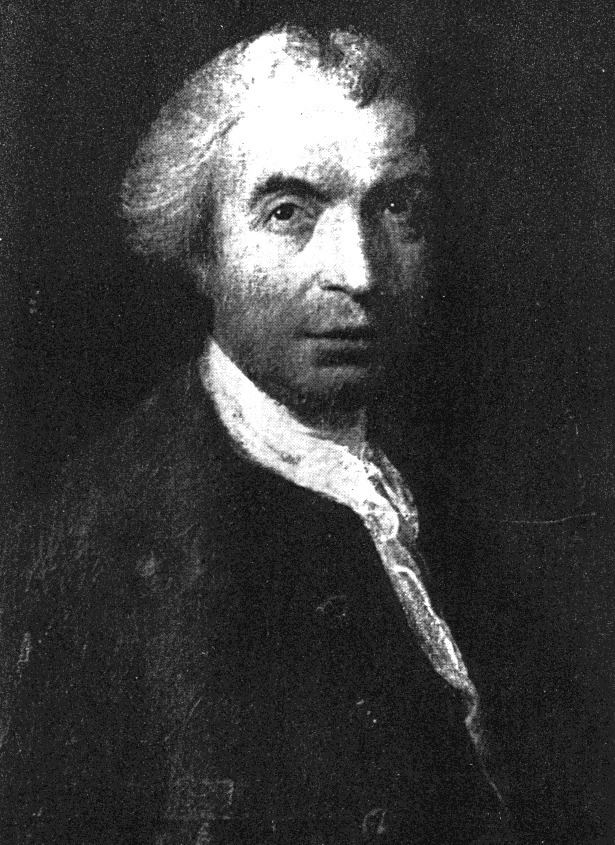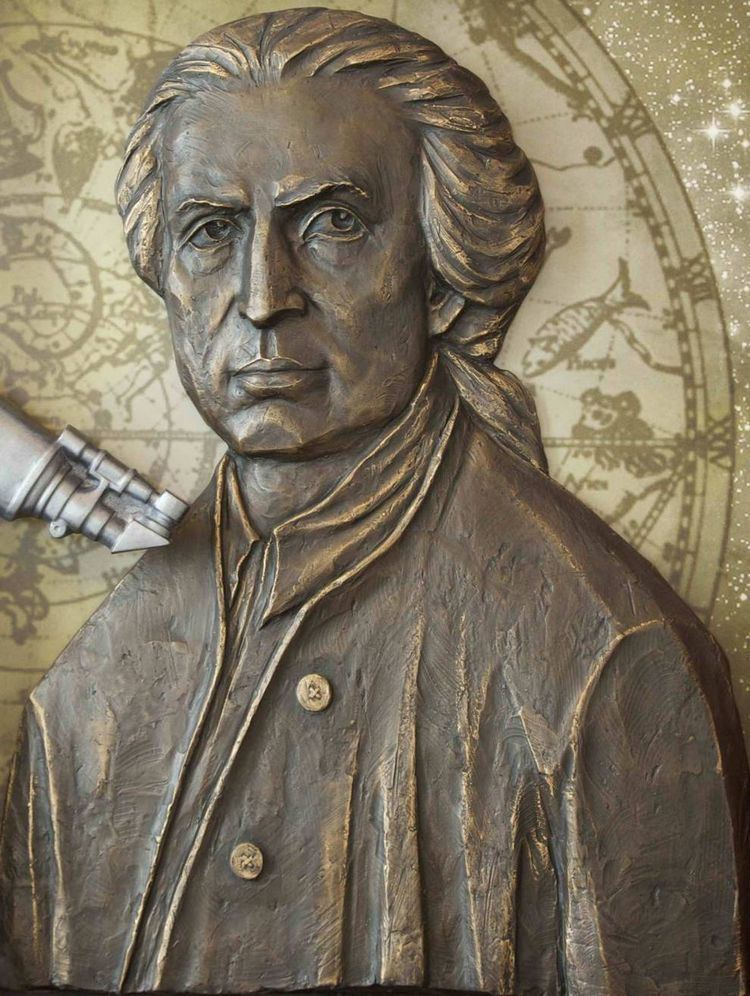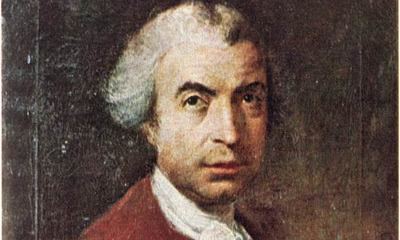Role Physicist | Name Roger Boscovich | |
Alma mater Pontifical Gregorian University Known for precursor of the Atomic theory, founder of Brera Observatory Education Pontifical Gregorian University Books A theory of natural philosophy Parents Nikola Boskovic, Paola Bettera Siblings Ivan Boskovic, Pero Boskovic, Bartolomeo Boskovic, Bozo Boskovic, Marija Boskovic, Mare Boskovic Similar People Ivan Supek, Friedrich Nietzsche, Gottfried Wilhelm Leibniz, Pierre Clastres, Democritus | ||
Roger Joseph Boscovich (Croatian: Ruder Josip Boskovic, [rud͡ʑer josip boʃkovit͡ɕ], Italian: Ruggiero Giuseppe Boscovich) (see also names in other languages); 18 May 1711 – 13 February 1787) was a Ragusan physicist, astronomer, mathematician, philosopher, diplomat, poet, theologian, Jesuit priest, and a polymath from the city of Dubrovnik in the Republic of Ragusa (modern-day Croatia), who studied and lived in Italy and France where he also published many of his works.
Contents
- Early years
- Middle years
- Late years
- Further works
- Legacy
- Religious views
- Competing claims for Boskovics nationality
- Names in other languages
- Works
- References

He produced a precursor of atomic theory and made many contributions to astronomy, including the first geometric procedure for determining the equator of a rotating planet from three observations of a surface feature and for computing the orbit of a planet from three observations of its position. In 1753 he also discovered the absence of atmosphere on the Moon.
Early years

Boscovich was born in Dubrovnik to Nikola Boskovic and Paola Bettera, and was baptized on 26 May 1711 by Marinus Carolis, curatus et sacristia. The name Ruder/Ruggiero may have been given to him because both his great-grandfather Agostino Bettera and his mother's brother were called Ruggiero, the godparent was his uncle Ruggiero Bettera. He was the seventh child of the family and the second youngest. His father was a merchant born in 1642, at Orahov Do near Ravno in what was then the Ottoman Empire and is now Bosnia and Herzegovina. His father was rich in trading experience and knowledge of that part of the Ottoman Empire, but Ruder knew him only as a bedridden invalid with paralyzed legs and he died when Ruder was a child of 10. Boscovich's mother, Paola Bettera (1674–1777), nicknamed "Pavica", was a member of a cultivated Italian merchant family established in Dubrovnik since the early seventeenth century, to where her ancestor, Pietro Bettera, had come from Bergamo in northern Italy. She was a robust and active woman with a happy temperament who lived to 103.

Paola Bettera left nothing in writing, but Boscovich's aunt, her sister, wrote poetry in Italian. Their sons, Ruder's cousins and playmates, Antun Boskovic and Franjo Boskovic, grew up into good Latinists. His own brothers and sisters were all older than himself, except his sister Anica Boskovic (1714–1804), two years his junior. His eldest sister Mare Boskovic, nineteen years his senior, was the only member of the family to marry; his second sister Marija Boskovic became a nun in the Ragusa Convent of St Catherine's. His eldest brother Bozo Boskovic (Bosko, called Natale by Roger in private correspondence), thirteen years older, joined the service of the Ragusa Republic. His brother Bartolomej (Baro) Boskovic, born in 1700 and educated at the Jesuit school in Dubrovnik, left home when Ruder was 3 to become a scholar and a Jesuit priest in Rome. He too wrote good verse in both Latin and "Illyrian" (Renaissance era name for Croatian), but eventually burnt some of his manuscripts out of a scrupulous modesty. His brother Ivan (Divo) Boskovic became a Dominican in a sixteenth-century monastery in Dubrovnik, whose church Ruder knew as a child with its rich treasures and paintings by Titian and Vasari, still there today. His brother Petar (Pero) Boskovic, six years his senior, became a poet like his grandfather. He too was schooled by the Jesuits, then served as an official of the Republic and made his reputation as a translator of Ovid, Corneille's Cid and of Moliere. A volume of his religious verse, Hvale Duhovne, was published in Venice in 1729.

At the age of 8 or 9, after acquiring the rudiments of reading and writing from the priest Nicola Nicchei of the Church of St. Nicholas, Ruder was sent for schooling to the local Jesuit Collegium Regusinum. During his early studies Roger Boscovich showed a distinct propensity for further intellectual development. He gained a reputation at school for having an easy memory and a quick, deep mind.
On 16 September 1725, Ruder Boskovic left Dubrovnik for Rome. He was in the care of two Jesuit priests who took him to the Society of Jesus, famous for its education of youth and at that time having some 800 establishments and 200,000 pupils under its care throughout the world. We learn nothing from Boskovic himself until the time he entered the novitiate in 1731, but it was the usual practice for novices to spend the first two years not in the Collegium Romanum, but in Sant'Andrea delle Fratte. There, he studied mathematics and physics; and so brilliant was his progress in these sciences that in 1740 he was appointed professor of mathematics in the college.
He was especially appropriate for this post due to his acquaintance with recent advances in science, and his skill in a classical severity of demonstration, acquired by a thorough study of the works of the Greek geometers. Several years before this appointment he had made a name for himself with an elegant solution of the problem of finding the Sun's equator and determining the period of its rotation by observation of the spots on its surface.
Middle years
Notwithstanding the arduous duties of his professorship, he found time for investigation in various fields of physical science, and he published a very large number of dissertations, some of them of considerable length. Among the subjects were the transit of Mercury, the Aurora Borealis, the figure of the Earth, the observation of the fixed stars, the inequalities in terrestrial gravitation, the application of mathematics to the theory of the telescope, the limits of certainty in astronomical observations, the solid of greatest attraction, the cycloid, the logistic curve, the theory of comets, the tides, the law of continuity, the double refraction micrometer, and various problems of spherical trigonometry.
In 1742 he was consulted, with other men of science, by Pope Benedict XIV, as to the best means of securing the stability of the dome of St. Peter's, Rome, in which a crack had been discovered. His suggestion of placing five concentric iron bands was adopted.
In 1744 he was ordained to the Roman Catholic priesthood.
In 1745 Boskovic published De Viribus Vivis in which he tried to find a middle way between Isaac Newton's gravitational theory and Gottfried Leibniz's metaphysical theory of monad-points. He developed a concept of "impenetrability" as a property of hard bodies which explained their behavior in terms of force rather than matter. Stripping atoms of their matter, impenetrability is disassociated from hardness and then put in an arbitrary relationship to elasticity. Impenetrability has a Cartesian sense that more than one point cannot occupy the same location at once.
Boskovic visited his hometown only once in 1747, never to return. He agreed to take part in the Portuguese expedition for the survey Brazil and the measurement of a degree of arc of the meridian, but was persuaded by the Pope to stay in Italy and to undertake a similar task there with Christopher Maire, an English Jesuit who measured an arc of two degrees between Rome and Rimini. The operation began at the end of 1750, and was completed in about two years. An account was published in 1755, under the name De Litteraria expeditione per pontificiam ditionem ad dimetiendos duos meridiani gradus a PP. Maire et Boscovicli. The value of this work was increased by a carefully prepared map of the States of the Church. A French translation appeared in 1770 which incorporated, as an appendix, some material first published in 1760 outlining an objective procedure for determining suitable values for the parameters of the fitted model from a greater number of observations. An unconstrained variant of this fitting procedure is now known as the L1-norm or Least absolute deviations procedure and serves as a robust alternative to the familiar L2-norm or Least Squares procedure.
A dispute arose between Francis the Grand Duke of Tuscany and the republic of Lucca with respect to the drainage of a lake. As agent of Lucca, Boskovic was sent, in 1757, to Vienna and succeeded in bringing about a satisfactory arrangement in the matter.
In Vienna in 1758, he published the first edition of his famous work, Philosophiae naturalis theoria redacta ad unicam legem virium in natura existentium (Theory of Natural philosophy derived to the single Law of forces which exist in Nature), containing his atomic theory and his theory of forces. A second edition was published in 1763 in Venice and a third again in Vienna in 1764. In 1922 it was published in London, and in 1966 in the United States. Another edition was published in Zagreb in 1974.
Another occasion to exercise his diplomatic ability soon arose. The British government suspected that warships had been outfitted in the port of Dubrovnik for the service of France, and that therefore the neutrality of the Republic of Ragusa had been violated. Boskovic was selected to undertake an ambassadorship to London (1760), to vindicate the character of his native place and satisfy the government. This mission he discharged successfully—a credit to him and a delight to his countrymen. During his stay in England he was elected a fellow of the Royal Society.
In 1761 astronomers were preparing to observe the transit of Venus across the Sun. Under the influence of the Royal Society, Boskovic decided to travel to Istanbul. He arrived late and then traveled to Poland via Bulgaria and Moldavia then proceeding to Saint Petersburg where he was elected as a member of Russian Academy of Sciences. Ill health compelled him soon to return to Italy.
Boskovic visited Laibach, the capital of Carniola (now Ljubljana, Slovenia), at least in 1757, 1758, and 1763, and made contact with the Jesuits and the Franciscan Friars in the town. The Jesuits incorporated his teachings into their lectures at the Laibach Jesuit College. His physics became the foundation of physical lectures as well in other parts of the Habsburg Monarchy, and influenced the thought of Carl Scherffer, Gabriel Gruber, and Jurij Vega, the prominent physicists of the period. Both Vega and the Rationalist philosopher Franz Samuel Karpe educated their students in Vienna about the ideas of Boskovic and in the spirit of his.
Late years
In 1764 he was called to serve as the chair of mathematics at the University of Pavia, and he held this post with the directorship of the observatory of Brera in Milan, for six years. That's where Charles Burney met him; since Burney's Italian was not very good at that time, Boscovich obliged him speaking French.
He was invited by the Royal Society of London to undertake an expedition to California to observe the transit of Venus in 1769 again, but this was prevented by the recent decree of the Spanish government expelling Jesuits from its dominions. Boskovic had many enemies and he was driven to frequent changes of residence. About 1777 he returned to Milan, where he kept teaching and directing the Brera observatory.
Deprived of his post by the intrigues of his associates, he was about to retire to Dubrovnik when in 1773 the news of the suppression of his order in Italy reached him. Uncertainty led him to accept an invitation from the King of France to come to Paris where he was appointed director of optics for the navy, with a pension of 8,000 livres and a position was created for him.
He naturalized in France and stayed ten years, but his position became irksome, and at length intolerable. He, however, continued to work in the pursuit of science knowledge, and published many remarkable works. Among them was an elegant solution of the problem to determine the orbit of a comet from three observations and works on micrometer and achromatic telescopes.
In 1783 he returned to Italy, and spent two years at Bassano, occupying himself with the publication of his Opera pertinentia ad opticam et astronomiam, etc., published in 1785 in five volumes quarto.
After a visit of some months to the convent of Vallombrosa, he went to Brera in 1786 and resumed his work. At that time his health was failing, his reputation was on the wane, his works did not sell, and he gradually fell prey to illness and disappointment. He died in Milan and was buried in the church of St. Maria Podone.
Further works
In addition to the works already mentioned Boskovic published course material he had prepared for his pupils in mathematics. He also published accounts of his travels from Constantinople to Poland which was published in several expanded editions and translated into French.
Boskovic applied himself to practical engineering projects, including several discussions of architectural repair or stability, including repairs to St Peter's Dome, the stability of the Duomo of Milan, repairs to the library of Cesarea di Vienna and a report on the damage to sectors of Rome in June 1749 due by a whirlwind.
Boskovic also was consulted on civil works concerning ports and rivers: Ivica Martinovic has shown the extent to which Boskovic applied himself to such works, and lists 13 major works:
Martinovic's paper includes an extensive annotated bibliography on such works.
Legacy
For his contributions to astronomy, a lunar crater was named after him (see Boscovich crater).
The largest Croatian institute of natural sciences and technology, based in Zagreb is called "Ruder Boskovic Institute". Boskovic in 1782 was one of the founders of the Accademia nazionale delle scienze detta dei XL (National Association of the Sciences), with the name of "Societa Italiana" (Italian Association): this learned society gathered forty members representing the most important Italian scientists of the period. The oldest astronomical society in the Balkans based in Serbia's capital Belgrade is called Astronomical Society Ruder Boskovic.
In 1873, Nietzsche wrote a fragment called 'Time Atom Theory', which was a reworking of Boscovich's Theoria Philosophiae Naturalis redacta ad unicam legem virium in natura existentium. In general, Boscovich's ideas were a large influence on Nietzsche's ideas of force and the will to power.
Religious views
Boskovic was a Roman Catholic priest, and in expressing his religious views was straightforward. In his most famous book A Theory of Natural Philosophy (1758) he says: "Regarding the nature of the Divine Creator, my theory is extraordinarily illuminating, and the result from it is a necessity to recognize Him ... therefore vain dreams of those who believe that the world was created by accident, or that it could be built as a fatal necessity, or that it was there for eternity lining itself along his own necessary laws are completely eliminated."
Boskovic also composed poetry with many religious and astronomical allusions. In his Marian devotion, he wrote hexameter verses on the Virgin Mary.
In the same dome of St. Peter in Rome, whose cupola he saved from ruin, he worked as a confessor employing the Sacrament of Penance and Reconciliation.
Competing claims for Boskovic's nationality
The modern concept of nationality, based on ethnic concepts as language, culture, religion, custom, etc., was developed only in the 19th century. For this reason the attribution of a definite "nationality" to personalities of the previous centuries, living in ethnically mixed regions, is often indeterminable; Boskovic's legacy is consequently celebrated in Croatia, Italy and Serbia.
Croatian sources stress that he referred to his Croatian identity. In writings to his sister Anica (Anna), he told her he had not forgotten the Croatian language. When he was in Vienna in 1757, he spotted Croatian soldiers going to the battlefields of the Seven Years' War and immediately rode out to see them, wishing them 'Godspeed' in Croatian. In a letter to his brother from 1757, he describes this encounter and remarks at the end of the letter: "Eviva Haddick e i nostri Croati!", meaning "Long live to Haddick and to our Croats!". While living in Paris and attending to a military parade where he saw a Croatian unit from Ragusa, his words were: "there are, my brave Croats".
Italians claim that Boscovich was remembered as an Italian. According to Italians, he was born in city with mixed cultures - Croatian and Italian, and higher society of (also Boskovic) Dubrovnik was under Italian influence (Roman-Dalmatian influence). His mother's family came from Italy, and he was under Italian influence in life and career; He moved to Italy at his 14, where he spent most of his life. In some encyclopedias he is described as an Italian scientist. He used Italian language in private purposes even for the correspondence with his brother Baro, and Voltaire wrote to Boskovic in Italian "as a sign of respect". When d'Alembert in his Opuscule mathematiques (...) called him Italian, Boskovic said that "the author (ie himself) is Dalmatian from Ragusa, and not Italian (...) but for the long time passed in Italy since its first youth, he can in some way be called Italian.".
Serbian Academy of Sciences and Arts ranks him among the 100 most prominent Serbs claiming that his ancestry on his father's side (Nikola Boskovic) was "of ethnic Serbian origin."
Names in other languages
Works
Boscovich published eight scientific dissertations prior to his 1744 ordination as a priest and appointment as a professor and another 14 afterwards. The following is a partial list of his publications:
